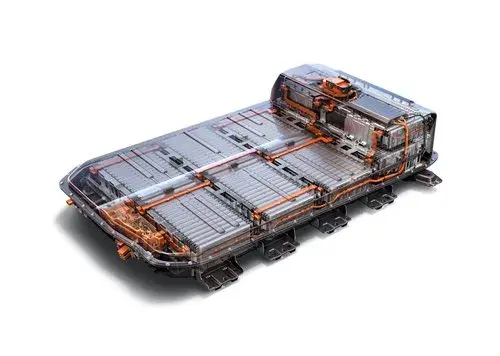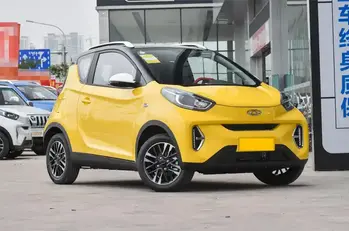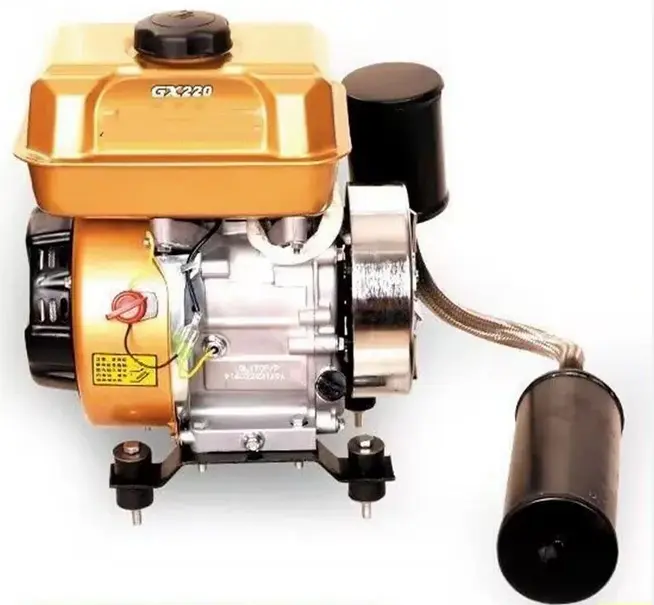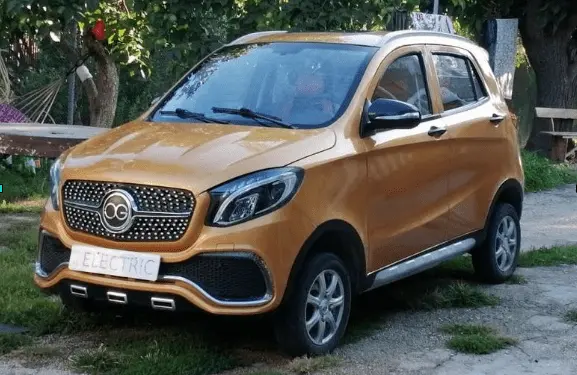
The latest developments in EV batteries are Silicon, Sodium and solid-state. The electric vehicle (EV) revolution is charging (pardon the pun) ahead at an unprecedented pace, driven by the pursuit of cleaner, more sustainable transportation options. Three groundbreaking technologies—Silicon batteries, sodium batteries and solid-state batteries—are emerging as potential game-changers in the world of EVs. Let’s explore the exciting developments surrounding these innovations and how they could reshape the future of automotive electrification.

The New Kid On The Block: The Latest EV Battery Developments
Silicon is the second most plentiful element in the earth next to oxygen. It follows that batteries made from this plentiful element is going to be cheaper than any other type once the technicalities of production is sorted out. When they are eventually mass-produced the price will fall even further.
The Silicon Anode Battery: The Future of Electric Mobility
Silicon Anode vs. Lithium Anode EV Batteries:
As the world moves toward a more sustainable future, the latest EV battery developments are playing a pivotal role in reducing greenhouse gas emissions and reliance on fossil fuels. The heart of any EV is its battery, and while lithium-ion batteries have long been the standard, silicon anode batteries are emerging as a promising alternative. In this post, we’ll explore the key differences between silicon anode and lithium anode EV batteries to understand their potential impact on the future of electric mobility.
Understanding Silicon Anode Batteries: The Basics
Silicon anode batteries are a type of lithium-ion battery that replaces the traditional graphite anode with a silicon-based one. Silicon offers several advantages over graphite, primarily its significantly higher energy storage capacity.
1. Anode Material:
- Lithium-Ion Batteries (Graphite Anode): Traditional lithium-ion batteries use graphite as the anode material. Graphite offers stable cycling but has limitations in terms of energy density.
- Silicon Anode Batteries: Silicon anode batteries use silicon, which can store up to ten times more lithium ions than graphite. This high capacity makes them an attractive option for improving energy density in EVs.
Comparing Silicon Anode to Lithium Anode EV Batteries
Now, let’s delve into a detailed comparison of these two battery technologies:
1. Energy Density:
- Silicon Anode Batteries: Silicon anode batteries have the potential to offer significantly higher energy density compared to lithium anode batteries. This means they can store more energy in the same volume, potentially increasing the range of EVs.
2. Charging Speed:
- Silicon Anode Batteries: Silicon anode batteries tend to charge in about one-sixth of the time it takes to charge lithium anode batteries. The increased capacity for lithium ions allows for rapid charging and efficient energy storage.
3. Cycle Life:
- Lithium Anode Batteries: Silicon anode batteries have historically faced issues with cycle life due to silicon’s tendency to expand and contract during charge and discharge. However, ongoing research aims to mitigate these problems.
4. Cost:
- Lithium Anode Batteries: Lithium anode batteries are well-established in the market and have a more mature manufacturing process, which currently makes them more cost-effective.
5. Safety:
- Lithium Anode Batteries: Lithium anode batteries have a strong safety track record, while silicon anode batteries may face challenges related to silicon’s expansion and contraction during cycling, which can lead to electrode damage.
6. Environmental Impact:
- Silicon Anode Batteries: Silicon anode batteries may have a lower environmental impact in the long term, given their potential for higher energy density, which can lead to fewer batteries being required over a vehicle’s lifetime.
Silicon anode batteries represent an exciting development in EV battery technology, with the potential to significantly increase energy density and charging speed. However, they are not without their challenges, such as cycle life and safety concerns. Lithium anode batteries, with their established track record, continue to dominate the EV market for now.
Sodium Battery Development: A Sustainable Alternative
Sodium batteries, often overshadowed by their lithium-ion counterparts, are making a comeback as researchers and engineers seek more sustainable and abundant materials for electric vehicle battery development. Sodium, unlike lithium, is widely available but less expensive to extract. This makes sodium batteries an attractive option for mass-produced EVs and energy storage systems.
One of the key advantages of sodium batteries is their energy density. Recent advancements in sodium-ion technology have significantly improved energy storage capacity, bringing them closer to the performance levels of traditional lithium-ion batteries. These developments are crucial in reducing range anxiety and making EVs more practical for everyday use.
Moreover, sodium batteries can potentially lower the environmental impact of battery production and disposal. With their abundant resources and reduced reliance on rare-earth materials, sodium batteries align with the sustainable goals of the EV industry.

Sodium Batteries vs. Lithium-Ion Batteries
Sodium batteries are a type of rechargeable battery that, like lithium-ion batteries, rely on the movement of ions between two electrodes to store and release electrical energy. However, the key difference lies in the materials used within these batteries.
1. Electrolyte Material:
- Lithium-Ion Batteries: Lithium-ion batteries use a lithium-based electrolyte, which allows lithium ions to move between the anode and cathode during charge and discharge.
- Sodium Batteries: Sodium batteries employ sodium-based electrolytes. Sodium, an abundant and cost-effective element, makes these batteries an attractive option for mass production.
2. Anode and Cathode Materials:
- Lithium-Ion Batteries: Common anode materials in lithium-ion batteries include graphite, while cathode materials vary but often include lithium cobalt oxide, lithium iron phosphate, or lithium manganese oxide.
- Sodium Batteries: In sodium batteries, sodium is used as both the anode and cathode material, with different forms or compounds of sodium employed to enhance performance.
Comparing Sodium Batteries to Lithium-Ion Batteries
Now, let’s dive deeper into the technical aspects and compare the two battery technologies:
1. Energy Density:
- Lithium-Ion Batteries: Lithium-ion batteries currently offer higher energy density compared to sodium batteries, which means they can store more energy in a smaller and lighter package.
- Sodium Batteries: While sodium batteries have made significant progress in recent years, they still have some catching up to do in terms of energy density. However, ongoing research aims to bridge this gap.
2. Charging and Discharging Rates:
- Lithium-Ion Batteries: Lithium-ion batteries have excellent charge and discharge rates, making them suitable for fast-charging applications and regenerative braking systems.
- Sodium Batteries: Sodium batteries are also capable of fast charging and discharging, and recent advancements have improved their performance in this regard.
3. Cost and Availability:
- Lithium-Ion Batteries: Lithium-ion batteries rely on lithium, a relatively scarce resource, which can lead to supply chain constraints and price fluctuations.
- Sodium Batteries: Sodium, on the other hand, is abundantly available and less expensive, making sodium batteries an attractive option for large-scale production and cost-effective electric vehicles.
- 4. Safety and Thermal Stability:
- Lithium-Ion Batteries: Lithium-ion batteries have faced safety concerns due to issues like thermal runaway. However, extensive research and safety measures have improved their safety record.
- Sodium Batteries: Sodium batteries are considered safer in terms of thermal stability, with a lower risk of overheating and fires.
- 5. Environmental Impact:
- Lithium-Ion Batteries: Lithium-ion batteries have environmental concerns related to lithium mining and disposal.
- Sodium Batteries: Sodium batteries utilize more abundant and environmentally friendly materials, aligning better with sustainability goals.
- Sodium batteries represent an exciting avenue for the future of electric vehicles. While they currently lag behind lithium-ion batteries in terms of energy density, ongoing research and development are narrowing the gap. Moreover, their cost-effectiveness, safety features, and use of abundant resources make them a compelling choice for large-scale EV production. As the EV industry continues to evolve, sodium batteries could play a pivotal role in making electric vehicles more sustainable and accessible to a broader range of consumers. It’s an exciting journey toward a greener and more efficient future in transportation.
- Solid-State Batteries vs. Lithium-Ion Batteries in Electric Vehicles
- Solid-state batteries represent another major breakthrough on the EV scene. These batteries replace the liquid electrolyte found in traditional lithium-ion batteries with a solid electrolyte. This design not only enhances safety by reducing the risk of thermal runaway but also offers several performance advantages:
- – **Higher Energy Density:** Solid-state batteries can store more energy in a smaller and lighter package, potentially increasing the range of EVs and reducing their weight.
- – **Faster Charging:** Solid-state batteries can accept higher charge and discharge rates, allowing for faster charging and improved regenerative braking capabilities.

– **Longer Lifespan:** Solid-state batteries are expected to have longer cycle lives, reducing the need for frequent battery replacements.
Leading automakers and battery manufacturers are heavily invested in solid-state battery research. Companies like Toyota and Volkswagen have announced their commitment to bringing solid-state batteries to the market within the next decade, signalling a shift towards this transformative technology.
1. Electrolyte Material:
- Lithium-Ion Batteries: Lithium-ion batteries employ a liquid electrolyte, typically a lithium salt dissolved in a solvent. This liquid allows lithium ions to move between the anode and cathode during charging and discharging.
- Solid-State Batteries: Solid-state batteries use a solid electrolyte, which can be made from a variety of materials, including ceramics, polymers, or a combination of both. This solid electrolyte enables the movement of ions while eliminating the need for a flammable liquid component.
2. Anode and Cathode Materials:
- Lithium-Ion Batteries: Lithium-ion batteries use specific materials for the anode (commonly graphite) and cathode (varying materials like lithium cobalt oxide, lithium iron phosphate, or lithium manganese oxide).
- Solid-State Batteries: Solid-state batteries often employ similar anode and cathode materials to lithium-ion batteries, making them compatible with existing battery manufacturing processes.
Comparing Solid-State Batteries to Lithium-Ion Batteries
Let’s explore the technical aspects and compare solid-state batteries to the tried-and-true lithium-ion batteries used in electric vehicles:
1. Energy Density:
- Lithium-Ion Batteries: Currently, lithium-ion batteries have a slight edge in energy density, allowing them to store more energy in a smaller space.
- Solid-State Batteries: Solid-state batteries are steadily improving in terms of energy density and are expected to reach levels comparable to or even exceeding those of lithium-ion batteries in the near future.
2. Charging and Discharging Rates:
- Lithium-Ion Batteries: Lithium-ion batteries are known for their excellent charge and discharge rates, enabling fast charging and regenerative braking.
- Solid-State Batteries: Solid-state batteries can handle rapid charge and discharge rates, offering similar performance capabilities as lithium-ion batteries.
3. Safety and Thermal Stability:
- Lithium-Ion Batteries: Lithium-ion batteries have faced safety concerns related to thermal runaway and fires, although improvements in design and safety features have mitigated these risks.
- Solid-State Batteries: Solid-state batteries are considered safer due to their non-flammable electrolyte, reducing the risk of thermal runaway and enhancing overall safety.
4. Longevity:
- Lithium-Ion Batteries: Lithium-ion batteries typically have a limited number of charge-discharge cycles before capacity degradation becomes noticeable.
- Solid-State Batteries: Solid-state batteries are expected to have longer cycle lives, potentially outlasting lithium-ion batteries, which is a significant advantage for long-term cost-effectiveness.
Challenges and the Road Ahead
While silicon, sodium batteries and solid-state batteries offer tremendous promise, there are still hurdles to overcome. Researchers are working diligently to address challenges related to cost, durability, and manufacturing scalability. Ensuring the safety and reliability of these technologies under various conditions remains a top priority.
Solid-state batteries are poised to be the future of electric vehicle energy storage. While they may not yet match the energy density of lithium-ion batteries, their numerous advantages—including safety, longevity, and potential for energy density improvements—make them a compelling choice for the EV industry. As these technologies continue to evolve, we can anticipate a future where electric vehicles are not only more efficient and reliable but also safer and more sustainable than ever before. Solid-state batteries are a technological leap toward greener, more advanced electric mobility.
Additionally, integrating these batteries into existing EV platforms and charging infrastructure presents logistical challenges. However, as advancements continue, these obstacles are expected to be overcome, paving the way for widespread adoption.
The developments around silicon, sodium batteries and solid-state batteries for electric vehicles are exciting steps forward in the EV industry’s quest for sustainability, performance, and safety. As these technologies mature and become more accessible, we can look forward to a future where EVs are not only more eco-friendly but also more practical and efficient than ever before. The race to electrify our transportation systems has never been more promising, and the future of ele








